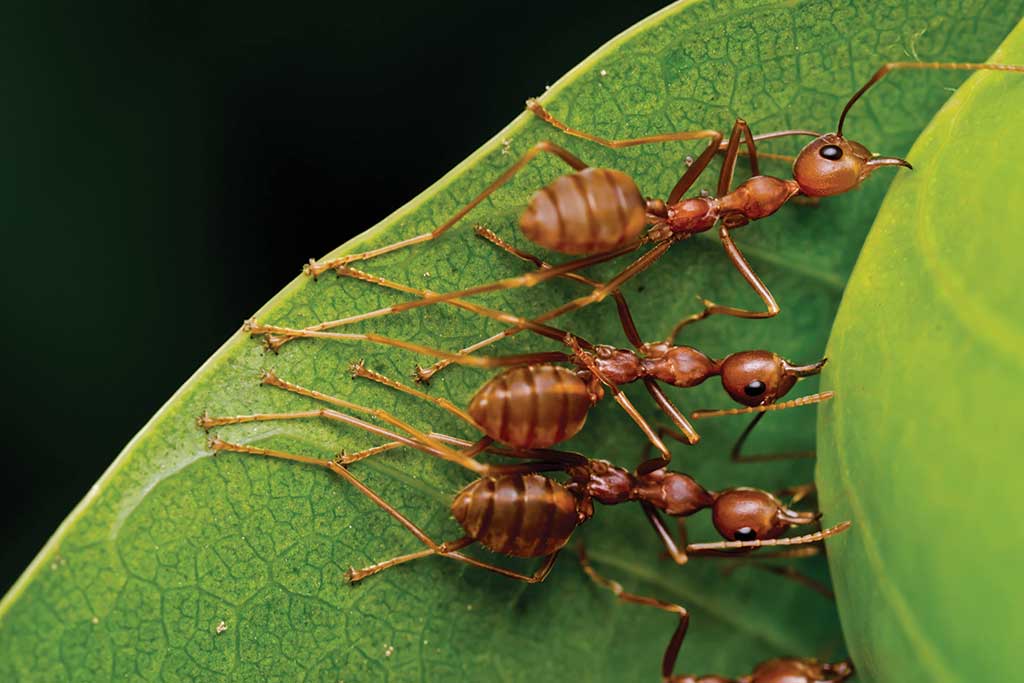We recently asked our team of international writers to share with us some of the most unusual meals they have ever eaten. Their experiences are sometimes amazing, often disgusting, but never boring. Life is an adventure, and eating is an exciting part of that journey. So grab a knife, fork, chopsticks (and maybe a barf bag) and prepare yourself for the unexpected. Whether it’s chowing down on bull testicles in Texas or licking ant butts in Australia, the culinary wonders of this world never cease to amaze us.
HONEY ANTS
ALICE SPRINGS, AUSTRALIA
I’d already dined on emu kebabs, crocodile carpaccio, and snake chunks, so I wasn’t particularly perturbed when our Australian guide plucked an ant from a tree and gave its butt a quick lick. “Yum, now you try it.” Delicately grasping the insect with pinchers facing away, I tentatively stuck my tongue to its green booty until a tangy droplet erupted in my mouth; a citrusy flavor, like SweeTARTS or limoncello. The honey ant waddles about with a enormous bum engorged with sweet, amber nectar. Indeed, after rimming a half dozen of them my mouth tasted like a little honey pot.
—Bill Strubbe
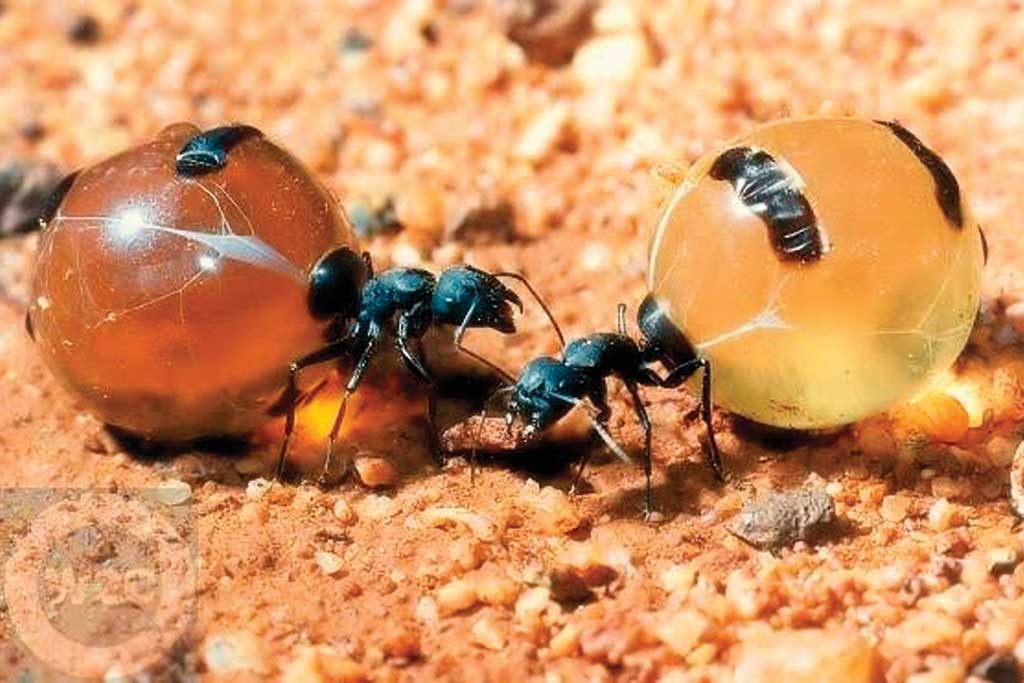
Honey Ants Australia
MOUNTAIN CHICKENS
DOMINICA, LESSER ANTILLES
We were island-hopping in the Lesser Antilles and landed in Dominica. We had heard that the best way to eat there is to explore the street vendors. An elderly lady told us she had the freshest “mountain chickens” in Dominica. She quickly chopped up the grilled meat and handed it to us in paper cones. It was juicy and delicious, until I came across a webbed foot. Turns out that “mountain chickens” are what they call their giant toads. We turned back toward the lady, and she smiled at us, “Told you it was delicious.” We decided she was right and kept on eating.
—H. Luiz Martinez
GIANT WATER BEETLE
BANGKOK, THAILAND
In Thailand, they call them “water beetles” or maeng da. To Westerners, these three-inch-long winged critters look like giant-assed, gnarly cockroaches and are a staple of Bangkok’s insect street-food vendors (they’re also a main ingredient in popular chili dip, Nam Prik MangDa). First, I yanked off the giant wings, which are inedible (I convinced myself this was like shelling a prawn) and inserted the body, head first, into my mouth. It took a solid two minutes to masticate, with a texture and flavor akin to cooked turkey skin, with a slightly fishy element. I gagged a couple of times, and one of the legs jabbed the inside of my cheek in a post-mortem bid for vengeance. Alas, I didn’t love the maeng da: I guess I’m just a fried grasshopper guy at heart.
—Lawrence Ferber
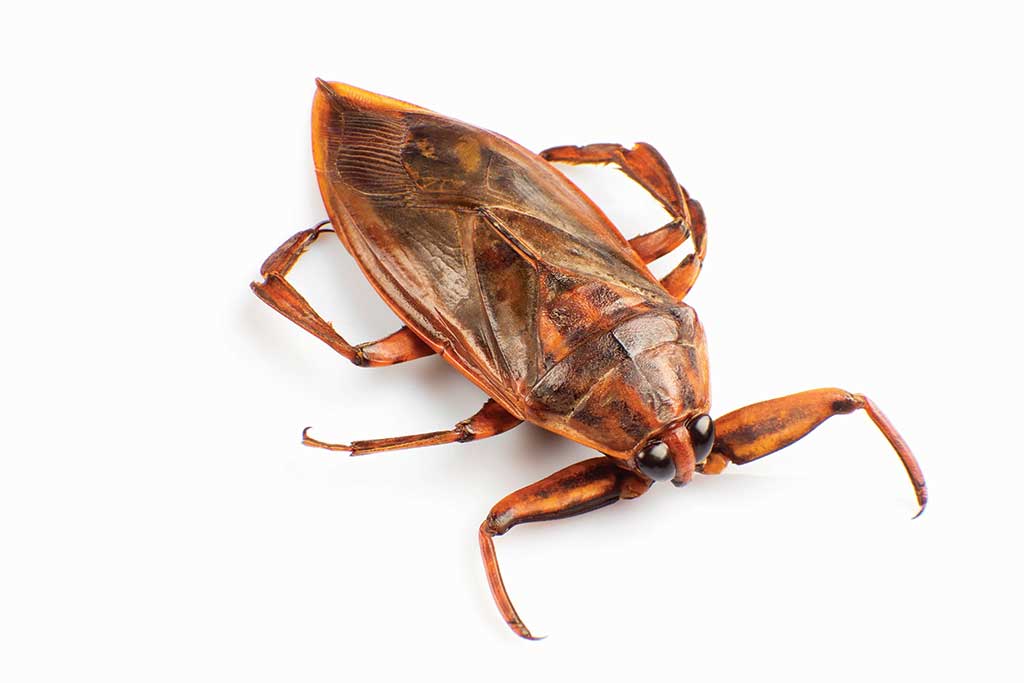
Water Beetle Thailand
GUINEA PIG
CUZCO, PERU
When I related my Peruvian culinary adventures, friends got upset. Understandable, I guess. Something about eating anything that could be a pet, like a guinea pig. In Peru, nobody gets upset. In fact, an estimated 65 million guinea pigs are consumed annually. Called cuy (pronounced “kwee”), this great protein source has been a staple of the Andean diet for about 5,000 years and has its own national holiday on the second Friday in October. I liked the flavor, which was pleasant, like rabbit. But baked whole and sim- ply sliced, every bite of cuy had many little bones. Challenging.
—Stephanie K. Blackwood
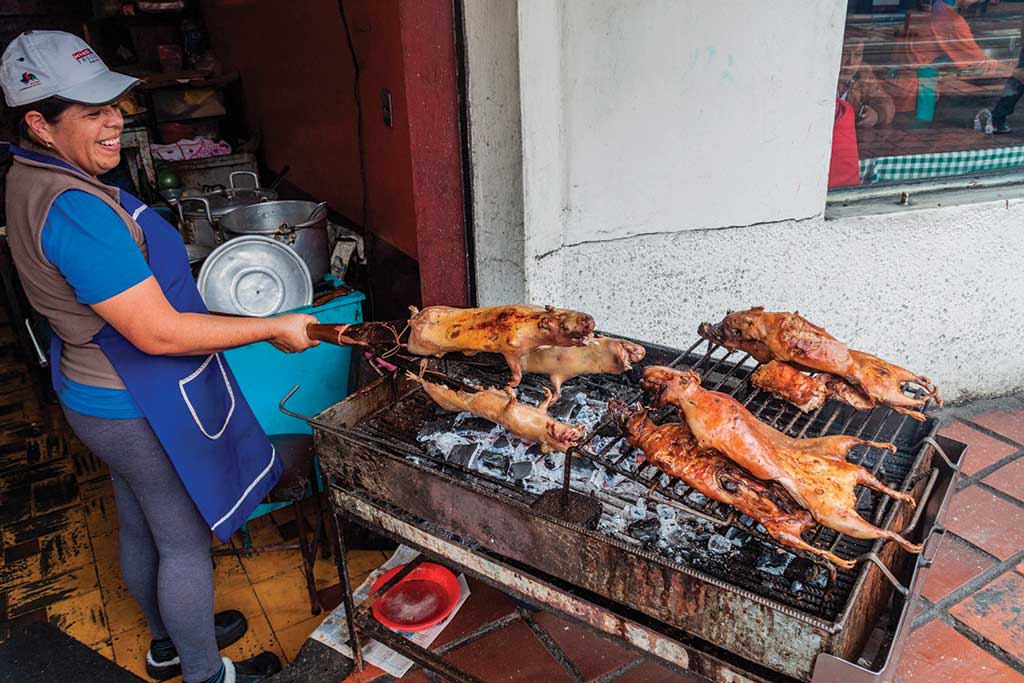
Guinea Pig Peru
PIG PARTS
KIEV, UKRAINE
While on a Peace Walk for Nuclear Disarmament during Gorbechav’s glasnost, we Americans were routinely farmed out to Ukrainian families for a hot meal. The farm table was laid with the best linens and crystal, pickled vegetables and warm bread, the family groomed in anticipation of their six honored guests. In porcelain bowls, the first course arrived: an opaque, congealed mass with mysterious knobby bits. Probing with my spoon, I was still unable to discern its origins. One American whispered, “Oh Lordy, pigs’ feet.” Not only were most of us vegetarians, all but myself were Jewish. Quick glances all around, and in a gesture of culinary détente, spoons dipped into bowls, then to mouths. As the muck slimed down my throat, our proud hosts eagerly awaited a response. Managing not to gag, I feigned a smile and replied, ochen harasho! (very good!). For their honored Yankee guests, they had generously butchered their pig and the subsequent courses consisted of other swinish cuts, which we too managed to ingest. Midway through the meal, I excused myself to the outhouse where I promptly heaved…my modest offerings to world peace.
—Bill Strubbe
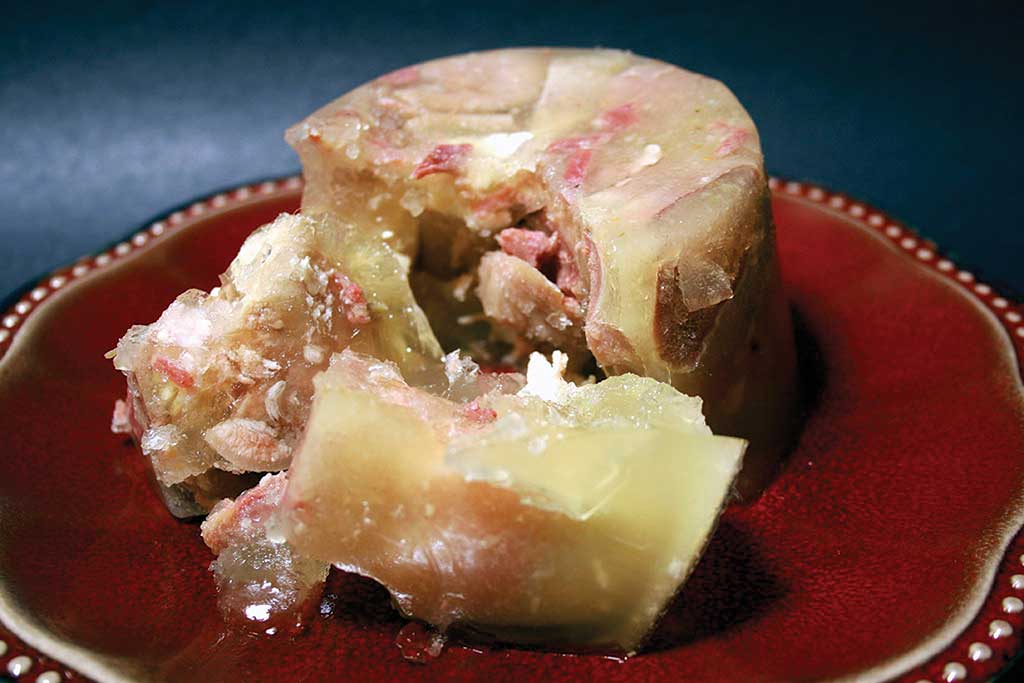
Jellied Pigs Feet Ukraine
REINDEER TARTARE
LAPLAND, FINLAND
This was no ordinary lunch, starting with the location, 100 miles above the Arctic Circle in Levi, the leading ski resort in the Finnish Lapland. Entranced by the darkness, trees reshaped into mythological animals by the snow (and shots of cloudberry brandy), I entered fell-top Tuikku restaurant for our welcome reception. Our hosts brought out a live reindeer, with white fir and antlers. Then I saw the menu. Reindeer tartare, smoked reindeer, and reindeer blood sausage. Each gamy, coppery, rich bite was a taste of place like few others, for here in the land of the Sami, the ancient Finns, the reindeer is spirit.
—Jeff Heilman
BALUT
MANILA, PHILIPPINES
The go-to for gross-out eating challenges on Survivor, I’m a Celebrity Get Me Out of Here, Fear Factor, etc. is this popular Philippine (and Cambodian/Vietnamese) street snack that entails a fertilized, hard-boiled duck egg with embryo—sometimes developed to the point that it has grown feathers and a beak. The ritual goes: crack the shell, sip the liquid, peel the rest, and chow down. The liquid, actually amniotic fluid, had a potent, gamey salted yolk flavor I found gag-worthy. While warned to not actually look at the embryo, embedded in a yolky section, I inadvertently managed a glimpse. All black and wet, but texture-wise I only noted a tiny, crunchy bit that might have been a shell fragment. The most challenging element was actually the egg white, a stiff, rubberized puck I had to spit out (I was told it had been boiled too long). Next time a balut challenge looms, someone please vote me off the island!
—Lawrence Ferber
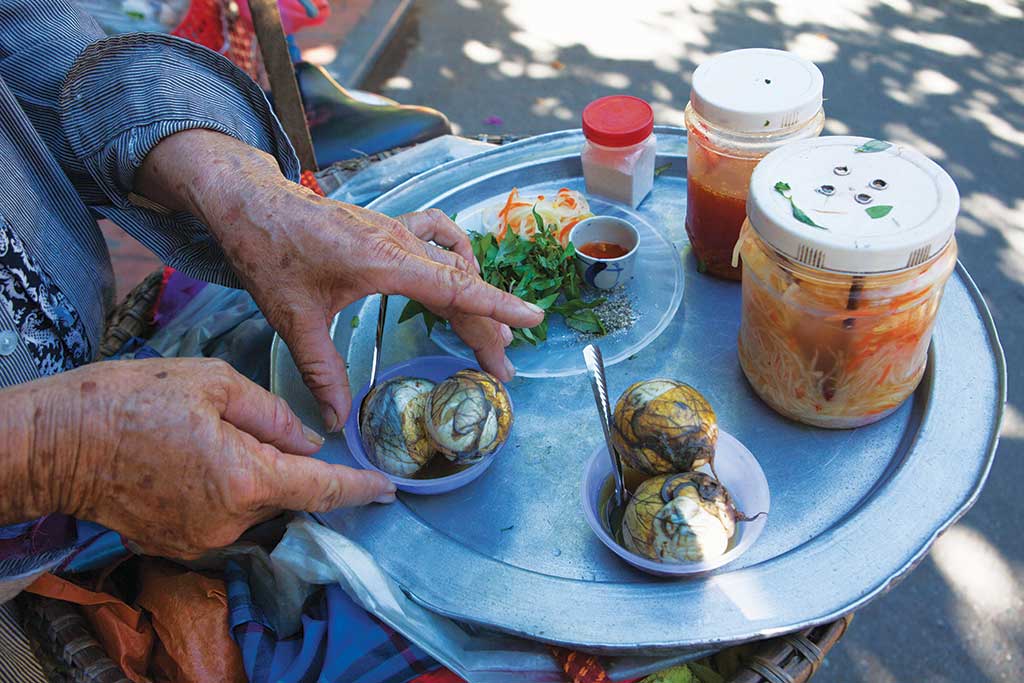
Balut in the Phillipines
ANT LARVAE TOSTADAS
MEXICO CITY, MEXICO
I know I am in for a treat when I enter the dimly lit dining area of Pujol, a restaurant that moved up a dozen places on San Pellegrino’s list of the 50 best restaurants in the world. New ideas are mixed with age-old traditions that spark innovative dishes, and no dish represents this as well as Chef Enrique Olivera’s tostada de escamol (antlarvae and pupae tostada). It has my table squirming, but I add a bit of hot sauce and think to myself that I trust Olivera and dig in. The ant larvae are surprisingly good: soft and gooey, but also nutty in taste and are akin to the consistency of beans. According to chef, the ant larvae and pupae absorb flavors better.
—Paul Summers
GUACAMOLE WITH GRASSHOPPER LEGS
MEXICO CITY, MEXICO
At Azul y Oro (Blue and Gold) in Mexico City, the guacamole copeteado is not just perfectly seasoned, creamy to perfection, and zesty with lime, but it’s got crunch! Topped with crispy, sautéed grasshopper legs, the dish is nutritionally balanced with protein, pretty close to that of a similar-sized serving of chicken breast. Award-winning Chef Ricardo Munoz Zurita is renowned as a “prophet and preserver” of a regional culinary tradition, but he also fearlessly explores and experiments, pushing boundaries with elegant outcomes.
—Stephanie K. Blackwood
INSECTS
NEW ORLEANS, USA
“Bug Apetit” is a popular exhibit at the impressive Audubon Insectariumin in New Orleans. This wonderful interactive nature museum explores the world of entomophagy (consuming insects as a food source). Eggs, larvae, pupae, and adult insects have been consumed on nearly every continent, and many scientists and nutritionists propose that they should be an important part of future cuisine as an inexpensive, highly nourishing, and ecologically sound alternative to more popular proteins. Science aside, though, there are free samples on offer: crispy cajun crickets, sugar-sweetened waxworms, and popcorn-like roasted ants are standard fare. For special events, there have been mealworms to dunk in a chocolate fountain, tempura dragonflies with a soy-dijon sauce, and bug-leg toffee. Full disclosure: most of the complimentary nibbles offered every day are fried, salted, and seasoned, so its easy to close your eyes and imagine you’re well within the realm of Frito-Lay. Nonetheless, it’s a snack that will make good dinner conversation for years. www.audubonnatureinstitute.org/insectarium
—Jim Gladstone
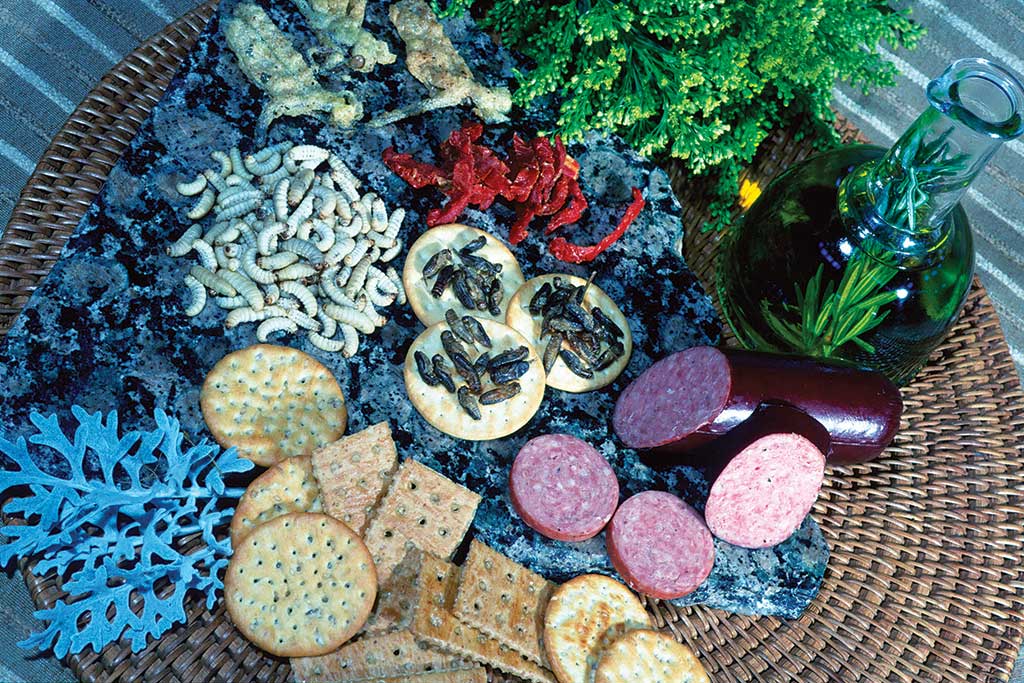
Bug Appetit in New Orleans
FROG-HEART SASHIMI
OSAKA, JAPAN
The most unconventional and bizzare thing I have ever eaten was frog-heart sashimi in Osaka, which is the food capital of Japan. I was representing Singapore in an international fashion-design competition and the person in charge of the international delegates took me to this restaurant that serves all these exotic foods. The heart was harvested fresh from a live frog, and it was still beating. I was not at all thrilled at the prospects of eating such an unappetizing dish. However, as I did not wish to offend the sentiments of my kind Japanese hosts and the frog heart looked like a tiny bite sized morsel, I decided to drop my inhibitions and just popped it into my mouth before I changed my mind. The heart burst open on the first bite and tasted warm and bloody. I am not interested to taste another one ever again, especially since I am now a vegetarian.
—Luke Elijiah
BEEF PENIS WITH ANTS
PHNOM PENH, CAMBODIA
In Cambodia, a number of dishes, like Machoe Kreoung Saik Ko, a tasty beef and water spinach soup, are served with small red ants. So why order plain ol’ beef penis when it can come with ants, right? The penis itself was served in disc-like slices, about the size of prunes. The meat was slightly chewy and fatty, with a brisket-like texture. Mean- while the ants, which absorb flavors much like escargot does, add a tiny bit of texture to the affair, especially the not-so-small queens, which are winged. Overall, a surprisingly toothsome treat! Watch me eat it: www.youtube.com/watch?v=OIhs0BlDnNo
—Lawrence Ferber
ROCKY MOUNTAIN OYSTER
TEXAS, USA
Derring-do dining defined my first Texas visit, in 2008, starting with rattlesnake cakes at game-centric Hudson’s on The Bend out- side of Austin. My Fort Worth food foray took real cojones, though, literally. At rooftop Reata Restaurant, my hosts suggested the calf fingers with cream gravy, otherwise known as the balls of Cowtown. Originated here in the 1920s, calf balls (also Rocky Mountain oysters or prairie oysters) have been a staple here and across the West ever since. How fared my testicle festival? Crunchy and faintly musky, they were an uneasy swallow and sacked me good in the middle of the night.
—Jeff Heilman
TRANSLUCENT FISH
TOKYO, JAPAN
Ordering food in a foreign country can be problematic if the menu isn’t translated into English and you don’t speak the language. Many restaurants in Japan overcome this by having displays of plastic food called sampuru (sample), often custom-tailored to accurately represent their menu. International visitors simply point to what they want to eat. On a recent trip to Tokyo, my boyfriend and I decided to have lunch at a hip looking eatery, a place too hip to have a sampuru display. Unable to comprehend the handwritten daily menu, and with no translated version or English speakers available, we decided to take pot-luck and simply point to two random things on the menu. With everyone around us tucking into delicious bowls of ramen or skewers of yakitori, what could possibly go wrong? When the plate arrived, I took one look and said to my boyfriend: “That must be what you ordered!” What could look so unappetizing that I immediately refused it? On the plate was a slithery, barely cooked fish, its flesh still silver and translucent, and its belly sac swollen and protruding with a mass of eggs. The veiny stomach membrane immediately split open, oozing fish eggs onto the plate. As masterfully presented elements of sushi, I’d have relished that fish and its roe, but in this raw, undressed and pregnant state, it was too visceral for me to swallow.
—Stuart Haggas
JELLY FISH
WASHINGTON D.C., USA
Not long after viewing the live jellyfish display at Ripley’s Aquarium of Canada in Toronto, I encountered this ancient invertebrate on the plate, at star chef Fabio Trabocchi’s top-ranked Fiola Mare on the Georgetown waterfront in D.C. Along with my first taste of sea urchin (briny, mineral-y and sweetly appealing), the frutti di mare included cold Japanese jellyfish salad. Mesmerizing to watch behind glass, but to eat? Absolutely. Cured, shredded and lightly dressed in vinegar, the experience was entirely textural. With little taste to report, in fact, this was rubbery, crunchy satisfaction for the teeth and jaw.
—Jeff Heilman


